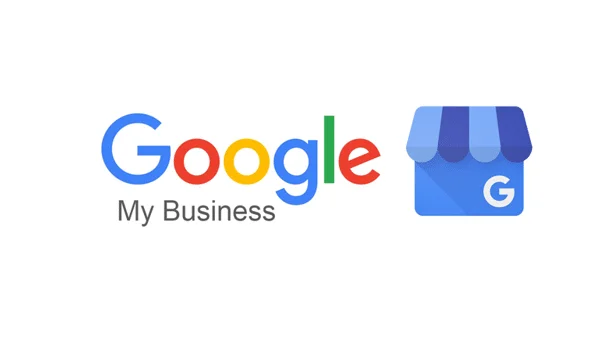Many companies use Google business listings to boost their online profile (known officially as a Business Profile). To maximize your Business Profile’s potential as a lead generation and search engine optimization tool, you’ll need the management and editing capabilities that aren’t automatically granted upon creation.
So the question then is how do you take charge of your Google My Business page? The answer is simple; in addition to creating a Business Profile, you need to set up a Google My Business account for your company, both of which are free. And this article will explain in detail, just how to go about that.
What exactly is Google My Business?
As previously stated, Google My Business is a tool that allows you to manage and optimize your Google Business Profile—one of many important business directory listings. So, before we get into what Google My Business is and how it works, let’s define a Business Profile.
Google refers to your Google business listing as your Business Profile. Google Maps and Google Search local results include Business Profiles.
Making a Business Profile is the same as adding a location to Google Maps, which anyone (including a random stranger or an automated listing generator) can do. Google only requires the business name, location, and category. Once Google confirms that it is not duplicate, the Business Profile for that location will be created. Customers can then leave reviews, upload photos, ask questions, and even answer questions on the Business Profile. Google may also populate the Business Profile with information gathered from other websites.
This means that a Business Profile can exist independently of a Google My Business account. And, whether you created your own Business Profile or not, you have no control over the information displayed or the reviews collected.
How to Make the Most of Google My Business for Local Marketing
So we’ve established that Google My Business is not your Business Profile, but rather a tool for improving the visibility and effectiveness of your Business Profile. Let’s go over the four main ways you can use this Google My Business listing to improve your local marketing.
Interact with Customers
Customers can interact with your Business Profile in a variety of ways, and you can respond to them using your Google My Business account. You can respond to reviews, answer questions, enable direct messaging, and configure alerts. You can even use Google My Business to publish posts to your Business Profile in the same way that you would on Facebook or other social media platforms.
Your Google My Business dashboard is where you can respond to reviews, publish posts, and answer questions from people who have visited your Business Profile.
Highlight your Company
A Business Profile on its own provides little information about your company. However, you can provide hours, a link to your website, products and pricing, attributes, and other details that distinguish your business through your Google My Business account dashboard. You will also use Google My Business to make necessary edits and updates.
In the SERP, a complete Business Profile provides a complete snapshot of your business, including its best features.
Gain Knowledge
The Google My Business dashboard can help you gain key insights into your audience and local search performance. You can see the queries customers are using to find your Business Profile, whether they found you on Google Maps or Google Search, a breakdown of actions taken on your listing, and how your photos are performing compared to other profiles in your category in the platform’s analytics tab. It’s also worth noting that clicks from a Business Profile can be tracked using UTM parameters and Google Analytics.
Carry Out Local SEO
Google has algorithms for ranking advertisements and websites, and it also has one for ranking Business Profiles. You can incorporate keywords into your Business Profile and perform other optimizations to help it rank in local results through your Google My Business dashboard, which we’ll go over next.
How to Make the Most of Google My Business for SEO
Google Business Profiles are ever-changing. Not only do they change form depending on the platform, but Google will also prioritize sections of your profile based on the term that was searched as well as the type of information that consumers in your category value the most. Even better, Google will highlight keywords in your profile’s content that it believes are relevant.
But, in the first place, there must be information to prioritize and keywords to emphasize in your profile. Google My Business is used to optimize your profile and expand your reach in the same way that you (or your agency) would use a content management system like WordPress to optimize your website for search engines. So how do you make the most of Google My Business for local SEO? Because optimizing for Google is essentially optimizing for searchers, it all boils down to three things: targeting, information quality, and trust.
Target Your Information
To use Google My Business for SEO, include relevant keywords in your Business Profile so Google knows what you’re trying to rank for. Use them in your “from the business” description, responses to reviews, answers to questions, and blog posts. As with any other SEO strategy, make sure to incorporate them naturally.
Maintain Quality Information
The completeness and accuracy of your Business Profile affect its rank, so make sure to fill out every section of your Google My Business dashboard. Your contact information, special hours, and attributes are especially important here.
Create Trust
The final method for using Google My Business for SEO appeals to Google’s algorithm’s trust component. As your company grows, keep your information up-to-date and accurate. Maintain a steady flow of reviews and respond to them. Additionally, show Google that you are active by regularly uploading photos and publishing posts to your Google My Business Business Profile.
How to Create a Google Business Profile from the Ground Up
Skip these steps and proceed to the next section if your Business Profile already exists and you only need to claim it. If not, you’ll have to start from scratch, and here’s how.
Step 1: Add Your Business to Google Maps.
To begin, go to Google Maps and open the menu by clicking the button in the upper left corner of the page.
Look for the “Add your business” button on the menu.
Step 2: Open a Business Account
If you already have a business account, just sign in and skip this section.
If you don’t already have an account, follow the steps below to set one up.
Select “To manage my business” from the drop-down menu when you click the “Create account” button.
Then, enter your information (such as your name, preferred username, and so on) and click the “Next” button.
Following that, you must provide a phone number to verify your identity.
Google will request a few more details before redirecting you to their terms and conditions page.
To start creating your profile, click the “Agree” button on the terms and conditions page.
Step 3: Enter Your Company Name and Category
It’s now time to create your Business Profile. The first step is to decide on a company name and category.
First, type out your company name. Google will show you a list of existing businesses in its database as you type.
If your company is on the list, proceed to the next step to learn how to claim it. If it isn’t, type out your company name completely.
Then, start typing your business category and select one from the list.
(Don't try to stuff your business name with keywords; Google may suspend your account if you do; you'll add relevant keywords in your Business Description later.)
Your business category informs Google about the nature of your company, making it more searchable.
You can always change or add more business categories later.
Step 4: Include Your Location
Next, if you have a physical location, enter it. While adding a location is usually optional, some business categories, such as “Restaurant,” require it.
If you don’t have a physical storefront, select “no” to skip this step.
If you select “yes,” Google will ask you for the address of your current location. On Google Maps, searchers will see your address, so enter an accurate location.
Google will also use your address to provide you with a list of possible duplicate listings.
If one of the duplicate listings belongs to you, proceed to the next step to learn how to claim your company. Otherwise, select “None of these.”
Step 5: Determine Your Service Area
Depending on whether you added a business address, this step will look different.
This step is optional if you added a business address. Google will inquire whether you offer deliveries or home and office visits.
Select “Yes” to tell searchers what areas they can reach.
Select “No” to proceed to the next step.
You cannot skip this step if you did not include a business address. Simply select one of Google’s suggested areas or start typing the name of the area you serve.
Step 6: Enter Your Contact Info
Then, if you have one, include your phone number and website URL.
Searchers will find and contact you using the information you provide, so double-check that it is correct.
Step 7: Agree to Receive Updates and Recommendations
Google will now ask you if you want to receive updates and recommendations for your GBP. We recommend that you select “yes” so that you can receive best practices directly from Google.
Step 8: Check Your Listing
Your Business Profile will not be searchable until it has been verified. While you have the option to skip business verification during your initial setup, you will eventually need to verify your listing.
There are five methods for verifying your listing:
- On the phone. Your verification code will be delivered to you via automated phone calls or text messages from Google.
- Through email. Your verification code will be sent to you via email.
- On a postcard. You will receive a postcard with your verification code at your registered address.
- Using video recording. Make a video that proves your location, your business equipment, and that you are the authorized manager of the company.
- Through a live video call. Show the same video recording proof on a live call with a support representative.
Depending on whether or not you’ve added a location, your verification options change. If you have a physical location, you must confirm your business via postcard.
The postcard includes a five-digit code that you will enter when you log in to your account.
If your company does not have a physical location, you must enter your personal address for verification.
Following that, you have the option of receiving a phone call, a text message, or one of the “Other options.”
If the available business verification options do not work for you, you can contact the Google Business Profile team via their help center.
Step 9: Provide additional information and opt-in to Google Services
Following the verification step, Google will prompt you to provide additional information about your company and opt-in to relevant services based on the business category you selected.
You can add specific services, set your hours, enable messaging, and do other things.
We recommend filling out as much as possible. After all, information such as operating hours and business photos will aid potential customers in contacting you.
Here are the optional steps where you can provide additional information or sign up for additional services:
How to Claim and Verify Your Company
The first step is to register your company. You can use an existing Google account or create a new one to sign in. If you work from home or have a warehouse that you do not want customers to visit, you can select “no location,” which means that your listing will not display your address and you will not appear in Google Maps.
The essential information, such as location, hours, website, phone number, and other contact details, should be filled in or verified first. Because these details will appear on your Google Maps listing, be as specific as possible.
Another crucial step is to have your company verified on Google. Google can validate the legitimacy of your business in a relatively short period of time. This is typically accomplished via phone calls, but it can also be accomplished via triggered email or even a postcard. When you’re done, there will be a small blue icon next to your listing to let everyone know it’s been verified.
How to Use the Google Business Profile Dashboard
Aside from the ability to manage your company’s information, you’ll want to take advantage of the Google Business Profile dashboard’s other useful features.
Info
The info section is where you can post basic information about your company, such as its name, address, phone number, and hours. If any of these things change, whether permanently or temporarily, it is a good idea to update the information on this page. Google will typically send you an email reminder to do things like update your holiday hours.
During the COVID-19 pandemic, Google added a section for you to inform customers about the precautions you’re taking at your business to keep customers and employees safe, as well as any restrictions, such as only offering takeout or curbside pickup.
Photos
On the dashboard, you can view images that others have uploaded about your company and upload your own. Prospective customers, particularly millennials, expect to see visuals about your company, such as high-quality product shots (or images related to your services) and/or location images (including 360-degree virtual tours) as well as your logo. These visual elements can help direct new customers to your website.
Goods and services
These two dashboard sections allow you to tell potential customers about what you sell and what makes your products or services better. Update this section whenever you add a new product or service or discontinue one. If your company schedules appointments, you can include a URL for appointment scheduling in this section.
Messages and Phone Calls
Google can track calls and messages that are routed through Google to your business. This provides you with more information about prospects, allows you to track your lead generation through Google, and allows you to call back anyone who has not yet been connected to a person.
The calls feature displays missed calls by day of the week and time of day so that you can staff the phones during peak times. Messages enable prospects to contact you directly from a Google search result or Google Maps.
Insights
Insights is the name of Google Business Profile’s lightweight dynamic analytics dashboard. With Insights, you can see how people are finding your company and gain a better understanding of who you are and aren’t reaching. It also displays the percentage of people who found you by searching for your company name rather than your product or service.
Posts
Google Posts are excellent for informing customers about new offers and advertising what your company excels at. Posting sales and promotions, as well as seasonal events and specials, is an excellent way to attract new customers. When users search for your company on Google, they will also see your most recent posts, so a catchy headline is essential.
Reviews
The reviews section of Google Business Profile is one of the most important. You can view and respond to customer reviews of your business in the reviews section.
Although you may believe that you should only respond to negative reviews in order to tell your side of the story, it is a good idea to respond to both positive and negative reviews in order to express gratitude for positive reviews and to try to correct problems highlighted by negative ones. People who leave a negative review and then have their issue resolved can later edit their review to improve it. Because Google reviews are such an important part of your online reputation, we’ll go over how to manage them in more detail below.
Other features
Other features of Google Business Profile include the ability to add users (such as an in-house marketing employee or a marketing firm), create a Google website for your business, obtain a custom Gmail account for your business, and advertise with Google.
How to Handle Google Reviews for Your Company
Customer reviews are an important part of any business; unfortunately, many SMB owners are not properly trained to handle and respond to negative reviews. In fact, the issue is so widespread that Google offers advice to business users, but we have a few of our own.
- Apologizing is acceptable; arguing is not. If someone has a bad experience, even if you believe they are lying or misrepresenting what happened, it is never a good idea to argue or explain why they are wrong. Remember, your goal isn’t to persuade one irate reviewer to change their mind; it’s to demonstrate the type of business owner you are to every prospective reader who sees your interaction. Any time a business owner appears defensive online, it is a huge turnoff and a huge red flag. Instead, sincerely apologize for the negative experience and express your desire to do better in the future.
- Offer to resolve the issue. Even if the reviewer declines your offer to make amends, it demonstrates to other Google users that you value your customers and provide excellent customer service.
- Consistency and brevity are essential. Establish a standard for responding to online reviews if you intend to do so. When and who will respond in your company? It’s a good idea to schedule a weekly time to respond to inquiries and reviews. You should also keep your responses to a minimum. Even if your internal tone is calm and kind, a lengthy, multi-paragraph response will come across as frantic and defensive.
- Remember to say “thank you. Some business owners forget to thank their loyal customers while writing lengthy responses to negative reviewers. People are aware of this. If someone leaves a particularly thoughtful positive review, thank them right away! ”
- Take note of repeated criticism. The most common mistake that business owners make when it comes to online reviews is emphasizing positive feedback while dismissing negative feedback. It doesn’t matter if you disagree or don’t see the problem; if multiple reviewers say your staff is rude, your prices are too high, your service is subpar, or anything else negative, then listen. Online reviews are similar to a free focus group, and you can either ignore any negative feedback or improve your business by listening and adapting.
- HOW DOES GOOGLE MAKE MONEY? The Revenue Streams In 2023
- FACEBOOK BUSINESS PAGE: Meaning, Creation, and Cost
- CUSTOMER JOURNEY: Meaning and How to Use the Maps to Create a Unique Customer Experience
- GOOGLE MAPS RANKING: How to Increase Site Ranking, SEO, & Checks






